Recent China-Hong Kong Inbound and Outbound Investments into Asia

Posted by China Briefing
Preparations for RCEP are well underway as China and Hong Kong make strategic acquisitions and investments.
By Asia Investment Research
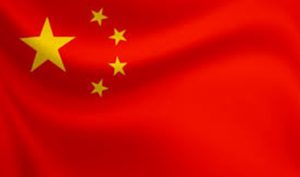 China
China
Chinese outbound investments into Asia (including Australia) totaled 101 or roughly 40% of Q4 total volume of outbound investments and 48% of total Q4 global outbound. This percentage of volume has remained flat over the past few quarters, although China’s Asian outbound investments as a percentage of its global aggregate has increased, meaning more money has been allocated to Asia than elsewhere.
In Q4, China outbound investment into Asia was US$6 billion or 48.0% of the global outbound total while announced Asia inbound was US$10.1 billion, the highest since 2017. To recap as to why inbound surpassed outbound, President Xi Jinping fast forwarded the proposed 2020 inbound investment China law in 2018, then launched China’s dual circulation policy in Q4 2020. These two major policy changes led to Chinese inbound FDI (included in our data) rising by 20% in dollar terms in 2021 to US$181 billion after being stagnant at around US$135 billion for much of the previous decade.
The Q4 2021 figures have been heavily influenced by foreign investors preparing for the commencement of the Regional Comprehensive Economic Partnership (RCEP) free trade agreement, which came into effect on January 1, 2022, just over six weeks ago. We expect these investment trends to continue to tap into opportunities this new trade bloc provides – covering 30% of global GDP and 30% of the global consumer market.
China in fact led the way with over 100 outbound investments into Asia/Australia: 46 into Hong Kong, 25 into Southeast Asia (Singapore, Indonesia, Vietnam, and Thailand), 17 into East Asia (Taiwan, Japan, and South Korea), 6 into South Asia (India and Pakistan), and 7 into Australia. The latest issue of Asia Investment Research details these.
On the larger scale, these investments included the completion of the China-Laos Railway, which opened in December, as well as the Phase 3 development of Thailand’s Laem Chabang Deepwater Port, Sri Lanka’s Colombo East Container Terminal, and Indonesia’s Java High-Speed Rail among others.
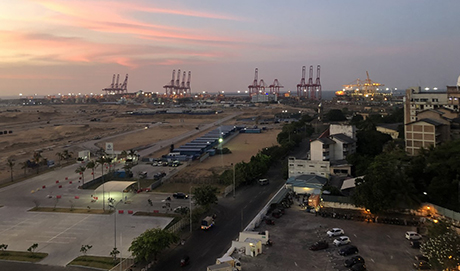
The Colombo East Container Terminal Development
China also received funding from the two multilateral policy banks it has investments in, the Asian Infrastructure Investment Bank (AIIB) and the BRICS New Development Bank (NDB), as follows:
Henan Province Flood Prevention
In December, AIIB funded US$1 billion of the US$1.4 billion PC for an emergency operation in response to the urgent need of the government for post-flood disaster recovery and reconstruction. The project will comprise activities in the municipalities of Zhengzhou, Xinxiang, and Jiaozuo, which are among the most severely impacted by the flood. Interventions will focus on rehabilitation and reconstruction of damaged infrastructure. The project will support post-disaster recovery in sectors of water resources and flood management, urban, and transport, which are critical to social and economic recovery of the project municipalities and the province
Liaoning Public Transport 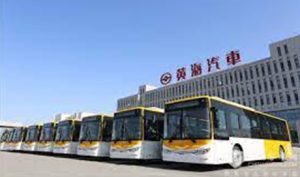
AIIB funded US$150 million of the US$214.3 million PC to substitute modern battery electric buses (1,285 BEBs) for existing diesel-fueled or gas-fueled buses in five small/medium cities in Liaoning, including Fuxin City, Hu’ludao City, Jinzhou City, Panjin City, and Yingkou City. Public transport management systems in these cities will be upgraded using smart digitalized platforms.
Qingdao Metro Line Six 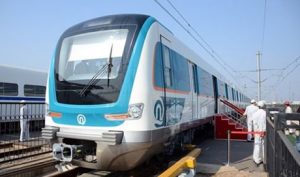
NDB is funding 18% of the RMB 17,914 million PC Qingdao Metro Line Six (Phase I). It is located in the West Coast New Area of Qingdao and has 20 stations planned over the total length of 30.2 km. The project includes interchanges with six other metro lines in Qingdao and will substantially improve the connectivity and mobility among important economic and residential areas in the West Coast New Area. Upon completion, it will help Qingdao’s sustainable development by reducing traffic congestion, increasing productivity of workforce, and improving standard of living.
Increased China Links with the Singapore Stock Exchange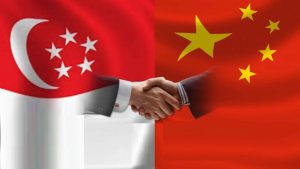
Q4 2021 ended with several new initiatives to expand and strengthen financial cooperation between China and Singapore, particularly in capital markets and green finance, agreed during the 17th Joint Council for Bilateral Cooperation (JCBC) between the two countries. These included the ETF Connect – the Shenzhen and Singapore Stock Exchanges signed a MoU to establish an Exchange Traded Funds (ETF) Product Link to enable eligible fund managers to offer ETF products to investors in each other’s markets – and collaboration in commodity derivatives. An example of this is that Asia Pacific Futures (APF) has become the first Singapore firm to acquire an Overseas Special Brokerage Participant (OSBP) status of the Shanghai International Energy Exchange (INE). This will allow Singapore-based investors to directly trade internationalized onshore commodity products through APF. Discussions continue on bond platform connectivity and greater financing flows to green projects in Asia.
 This article has been extracted from the February issue of Asia Investment Research, to be released on Thursday, February 17. The issue contains unique intelligence concerning Australia, Bangladesh, China, Hong Kong, India, Indonesia, Japan, Laos, Malaysia, Oman, Pakistan, Philippines, Singapore, South Korea, Sri Lanka, Taiwan, Thailand, Turkey, and Vietnam. To reserve your early bird discounted copy for just US$100, please click here. Offer valid until closing of business, Wednesday, February 16.
This article has been extracted from the February issue of Asia Investment Research, to be released on Thursday, February 17. The issue contains unique intelligence concerning Australia, Bangladesh, China, Hong Kong, India, Indonesia, Japan, Laos, Malaysia, Oman, Pakistan, Philippines, Singapore, South Korea, Sri Lanka, Taiwan, Thailand, Turkey, and Vietnam. To reserve your early bird discounted copy for just US$100, please click here. Offer valid until closing of business, Wednesday, February 16.
Hong Kong
Hong Kong had significant volumes and across industries (we describe these in further detail below), although there were only 5 investments over US$100 million in value and only 1 over US$200 million – StarChase Motorsports acquisition by China MeiDong Auto Holdings for US$581.1 million.
Relative to industries, financial (including crypto) saw 14 investments, tech (which includes blockchain, semiconductors, and software) saw 10 investments, consumer (including games) saw 6, including the largest Hong Kong deal. Logistics/transportation saw 4 investment deals, including two over US$100 million. Renewables/environmental science/energy saw 3 deals, including the second largest Hong Kong based deal. There were also investments in biotech/biopharma (a decrease from previous quarters), industrial, media (including social media), and chemicals. The two largest deals were in real estate (totaling US$580 million) by Hong Kong-based REITs into Australia.
Hong Kong – Asia Digital Banking
In early December, WeLab (Hong Kong), a leading pan-Asian fintech platform, announced the acquisition of PT Bank Jasa Jakarta (BJJ), a commercial bank in Indonesia and is also considering expansion into Thailand and Vietnam.
For further intelligence concerning investment flows into China and Hong Kong, please access the latest issue of Asia Investment Research here. The price is capped at US$100 until Thursday, February 17, when it reverts to the regular cover price of US$250.
For investment assistance into China and Hong Kong, please contact Dezan Shira & Associates at [email protected]
